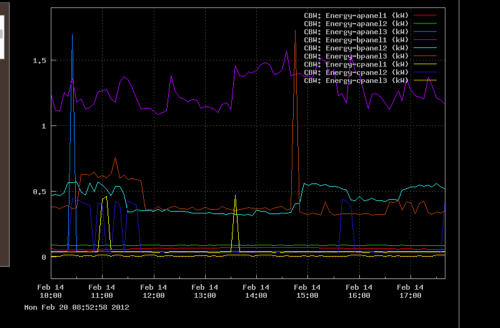OpenPCR
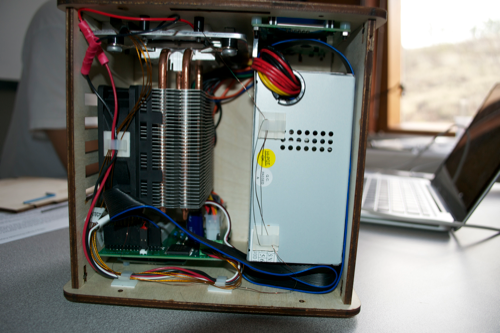

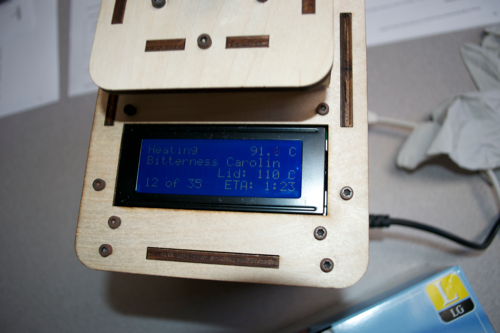 The purpose of this experiment is to test which of us (out of six selected people) have carried on that selective trait.
The purpose of this experiment is to test which of us (out of six selected people) have carried on that selective trait.


 The purpose of this experiment is to test which of us (out of six selected people) have carried on that selective trait.
The purpose of this experiment is to test which of us (out of six selected people) have carried on that selective trait.
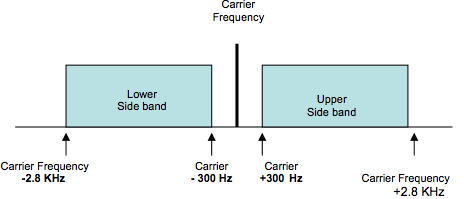 •When using a transceiver that displays the carrier frequency of phone signals, a displayed frequency of 3 kHz
below the upper band edge will result in a normal USB emission being within the band.
•When using a transceiver that displays the carrier frequency of phone signals, a displayed frequency of 3 kHz
below the upper band edge will result in a normal USB emission being within the band. •When using a transceiver that displays the carrier frequency of phone signals, a displayed frequency of 3 kHz
below the upper band edge will result in a normal USB emission being within the band.
•http://www.arrl.org/files/file/Instructor%20resources/ExtraClassSylalbus2009jan-AD7FO.pdf
HOW IT WORKS
On Monday, September first, we went up to the water tanks at Parker Ranch to establish a wireless connection between the Energy Lab and the water tank station. This would give us Internet connection roughly 20 miles from the lab. The original plan was to use the Power Bridge M-5, which is the antenna that forms the wireless connection, to find the Energy Lab antenna and make the connection. However, because of the preciseness of the Power Bridge M-5, it was too difficult to find the Energy Lab antenna and therefore, we were not able to establish a connection. Then, we tried the Nano Station M-2, which is less precise with two gigahertz rather than the Power Bridge M-5’s five gigahertz. When this also didn’t work, we tried using the Nano Station M-2 along with the Bullet M-2, which is a far more basic antenna. However, the Nano and the Bullet started “talking” to each other rather than making the connection with the Energy Lab so we disconnected the Nano and used the Bullet to establish our connection.
to be continued...
![[Group 2]-DSC_7563_DSC_7596-12 images.jpg Parker Ranch](/groups/energyproject/weblog/ef444/images/__thumbs__/6511e.jpg)
| Daily Average of Thursday March 1st | 214.848 kWH |
|---|---|
| Daily Average of Friday March 2nd | 204.660784 kWh |
| **Daily Average of Saturday March 3rd | 150.073978 kWh |
| **Daily Average of Sunday March 4th | 131.691226 kWh |
| Daily Average of Monday March 5th | 232.292218 |
| Daily Average of Tuesday March 6th | 214.376371 kWh |
| Daily Average of Wednesday March 7th | 232.712525 kWh |
| WEEKLY AVERAGE | 197.246443 kWh |
| Daily Average March 10th | 221.727192 kWh |
|---|---|
| Daily Average March 11th | 0 kWh (?) |
| Daily Average March 12th | |
| Daily Average March 13th | |
| Daily Average March 14th | |
| Daily Average March 15th | |
| Daily Average March 16th | |
| WEEKLY AVERAGE |

 As previously discussed, we are now expanding the energy auditing project to the golf center at the hotel. Although there are many possible projects at the golf center, we are starting with the golf carts. The golf carts down at the hotel are plugged in to be charged immediately after use. The cost to charge the hundreds of golf carts matches the payment of about 5 employees. To try to escape these high costs, the hotel bought a the Watt-Miser, which is an electric power management system that is designed to charge a large group of golf carts efficiently. Essentially the program automates charging of electric golf carts during off-peak hours. The Watt-miser does this by charging groups of golf carts at a time (group 1, group 2, etc.); when one group is fully charged, it movers on to the next group. According to the Watt-Miser website, savings can be from 10 to 60%, depending on the area. In one example, a 70 car fleet could save an average of $550 per month.(http://www.clubcar.com/golfoperations/fleetgolf/Pages/default.aspx)
As previously discussed, we are now expanding the energy auditing project to the golf center at the hotel. Although there are many possible projects at the golf center, we are starting with the golf carts. The golf carts down at the hotel are plugged in to be charged immediately after use. The cost to charge the hundreds of golf carts matches the payment of about 5 employees. To try to escape these high costs, the hotel bought a the Watt-Miser, which is an electric power management system that is designed to charge a large group of golf carts efficiently. Essentially the program automates charging of electric golf carts during off-peak hours. The Watt-miser does this by charging groups of golf carts at a time (group 1, group 2, etc.); when one group is fully charged, it movers on to the next group. According to the Watt-Miser website, savings can be from 10 to 60%, depending on the area. In one example, a 70 car fleet could save an average of $550 per month.(http://www.clubcar.com/golfoperations/fleetgolf/Pages/default.aspx)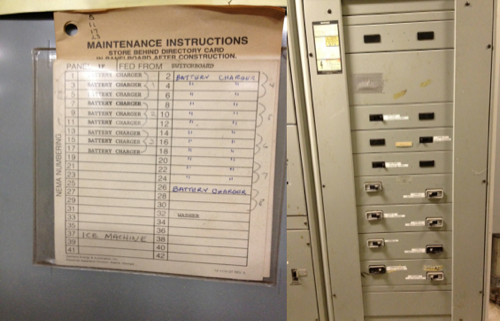 However, for many reasons, the hotel does not use the Watt-Miser.
However, for many reasons, the hotel does not use the Watt-Miser. 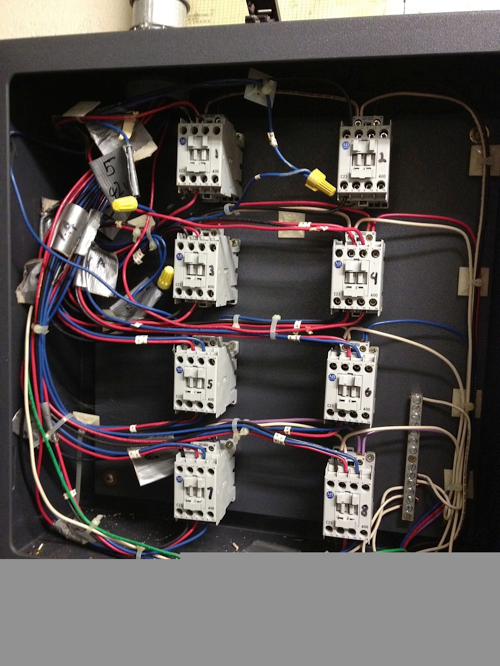 is not "top of the notch" technology; therefore, may not have worked as advertised anyway. What we can do, is figure out a way to use the Watt-Miser affectively, determine how to lower the energy expended on the golf carts, monitor what percentage of the golf course funding is going to the golf carts, and toy with alternative energy possibilities that can be used on the golf course. All of this will be done the same way it was done at the VAC.
is not "top of the notch" technology; therefore, may not have worked as advertised anyway. What we can do, is figure out a way to use the Watt-Miser affectively, determine how to lower the energy expended on the golf carts, monitor what percentage of the golf course funding is going to the golf carts, and toy with alternative energy possibilities that can be used on the golf course. All of this will be done the same way it was done at the VAC. Daily Average of February 20th |
96.80 kWh |
|---|---|
| Daily Average of February 21st | 102.9 kWh |
| Daily Average of February 22nd | 98.875 KWH |
| Daily Average of February 23rd | 100.76 kWh |
| Daily Average of February 24th | 89.47 kWh |
| Daily Average of February 25th | 90.2 kWh |
| Daily Average of February 26th | 94.54 kWh |
| WEEKLY AVERAGE | 95.364 kWh |
| Daily Average of February 20TH | 177.4 kWh |
|---|---|
| Daily Average of February 21ST | 207.06 kWh |
| Daily Average of February 22nd | 175.175 kWh |
| Daily Average of February 23rd | 178.04 kWh |
| Daily Average of February 24th | 174.269 kWh |
| Daily Average of February 25 | 157.85 kWh |
| Daily Average of February 26th |
172.26 kWh |
| WEEKLY AVERAGE | 168.86 kWh |
| Daily Average of February 20TH | 3.1812 kWh |
|---|---|
| Daily Average of February 21st | 4.266kWh |
| Daily Average of February 22nd | 3.302 kWh |
| Daily Average of February 23rd | 3.348 kWh |
| Daily Average of February 24th | 3.372 kWh |
| Daily Average of February 25th | 3.262 kWh |
| Daily Average of February 26th | 3.514 kWh |
| WEEKLY AVERAGE | 3.4776 kWh |
